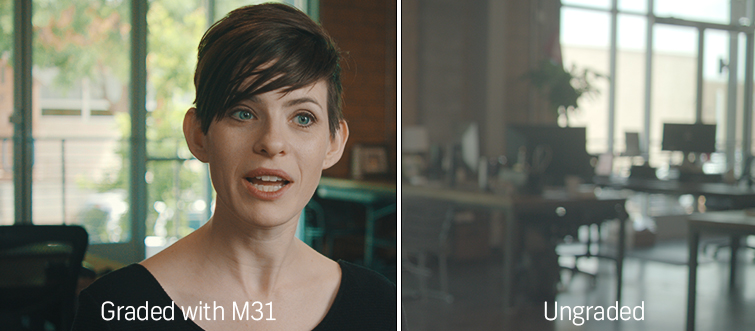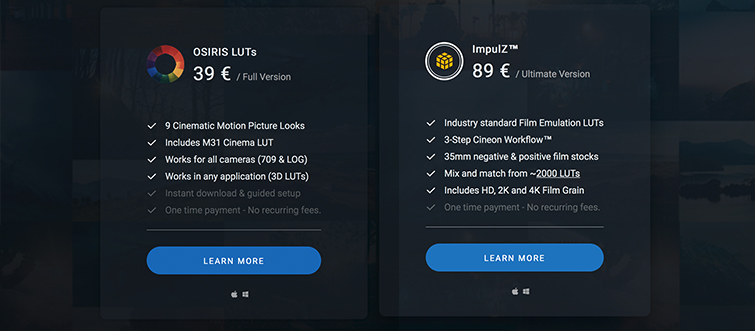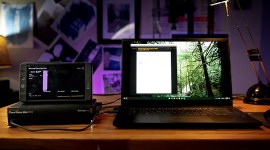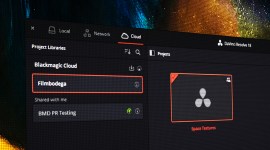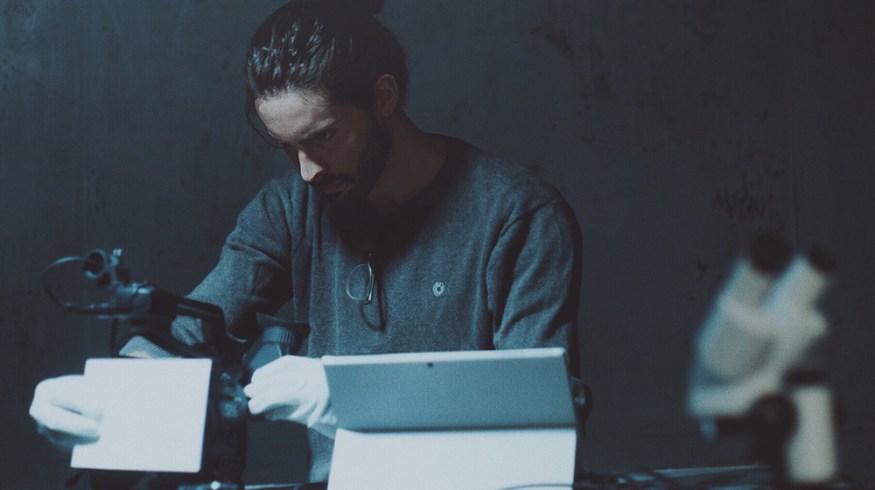
Exclusive Interview: The Creators of Some of The Most Popular LUT Packs Ever
If you haven’t heard of VisionColor LUTs, chances are you’ve seen them in action more than a few times in videos and films.
Cover image via Mo Gaff.
I’m going to get this out of the way quick: I’m a big fan of VisionColor LUTs.
If you haven’t heard of them or have never used them yourself, you owe it to yourself to give them a shot. They look great on LOG footage, Rec 709 footage, photos — anything you can throw them at. I’ve used both of the VisionColor packs (Osiris and Impulz) many times throughout my career — certainly more often than any other LUT packs I’ve come across.
I’d like to get this out of the way as well: this post is not sponsored by or paid for by VisionColor. I personally tracked down CEO Jonathan Ochmann so I could ask him a few questions about the creation of these LUTs and why they seem to be so versatile — that’s just how much I like them. I’ve always been very excited by how LUTs have added ease of availability to accurate film-style color curves and looks to all digital filmmakers. VisionColor LUTs are very true to the real deal, and they are created with care to achieve a very high level of accuracy across all camera platforms.

Our “Escape Room” short was graded with M31 from the Osiris Pack to get the classic Teal/Orange look.
While they in no way replace the true artistry and craft of being a digital colorist (as this meme about the M31 LUT would suggest), they do provide a really top-notch baseline to work with, are great to use on set with monitors, and will work drag-and-drop better than any other LUTs that I’ve used.
We have composer, software engineer, photographer Jonathan Ochmann (SoundCloud/Instagram) and his team to thank for these LUTs, and he was generous enough to give us some more info about how his packs were created. Lets dive in.
PremiumBeat: First off, I’d like to know some more about you in general. Are you a filmmaker yourself? What has your role with VisionColor been?
Jonathan Ochmann: I worked as a musical composer and software synthesizer engineer in my early twenties and have been into art and technology for as long as I can remember. I did dabble in filmmaking briefly but never really pursued it. I do take photography as a hobby pretty seriously. My professional focus for the past couple of years has been with VisionColor where I am CEO and lead developer.

Image via Mo Gaff.
Probably because of my roots in music, most of our early products were born out of the idea to apply the concept of musical sampling to the visual frequency range. Or that was the high level reasoning behind our approach anyways. I’ve always felt that the sound of a synthetic emulation of an analog instrument for example is dwarfed by even a mediocre recording of the real thing. And that’s where I thought the general approach to digital color processing fell flat on its face.
In music, it’s well established that if we want the sound of a Bosendorfer Grand Piano, we better record the real thing in a nice studio or go for the next best substitution, which is recorded samples of it.

Image via THE SinCos Studio.
On the visual end of the spectrum, we really wanted natural, organic looks but were stuck with using sliders and curves which only ever control tiny data fragments in vast interpolated datasets — which, just like on the audible end, do not suffice when attempting to emulate anything that has an organic, non-linear source, like analog film for example.
So that was why I thought creative color grading could really use an upgrade and learn from the failed attempts to try and emulate complexity by using simple tools that didn’t really seem to get people anywhere. We’ve since created products that build on the idea to directly sample from organic visual sources.
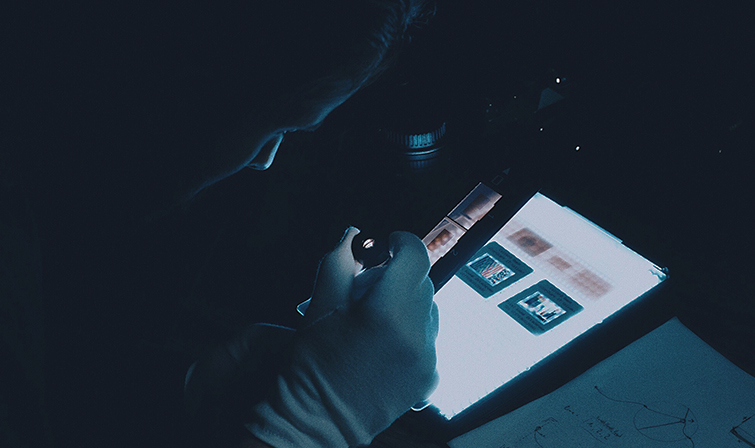
Image via Mo Gaff.
PB: What initially got you interested in LUTs and creating them?
JO: As a programmer, I’ve been familiar with lookup tables since the first time I attempted to processes complex data in real time and blew up my computer as a result (kidding). The concept is simple. You generally don’t want to run an expensive computation more than once so you save the result to memory after you first compute it. Then you can simply look it up in memory the next time you need that piece of data.
This goes right back to the analogy of virtual instruments I brought up earlier. The reason that synthetically generated sounds don’t live up to their organic prototypes is simple: Computers are not yet advanced enough to create extremely complex, non-linear simulations in real time. And as artists we need that real time feedback loop more than anything.
So what got me interested in “LUTs” as color grading tools is that they offer a real solution for encapsulating complex color operations in a computationally efficient data structure — both of which the artist and the engineer in me demand respectively.

Image via Mo Gaff.
PB: How were the Osiris and Impulz packs created?
JO: When we made Osiris, color LUTs weren’t really “a thing” yet, and we felt that the color presets and tools that were publicly available at the time were all lacking something.
The beauty of LUTs is that they are platform independent, not confined to a single application and can encapsulate countless operations from multiple engines, tools, color models and methods, including the sampling of colors from other media such as film that I mentioned earlier.
And that was precisely the idea for Osiris. We wanted to create better presets that more closely resembled the looks of contemporary Hollywood films.
So if you want to closely resemble someone else’s workflow the best way to go about it is copying. Our leading paradigm was this: steal their entire process. All of it. Shoot film. Good, expensive film. Develop and treat film. Scan film on really fancy scanner. Color Grade the digital negative. Print negative to positive print stock. Scan again.
Then repeat the entire process and at each step sample a set of some 30k+ color samples in a controlled environment that represent the current “state” of the color model. (Just like meticulously recording all 88 notes of a piano at different velocities. All right enough with the audio analogies already.)
In reality though, the process required loads of trial and error, which was mainly introduced by working with film. (For me, all love and nostalgia faded as soon as I actually had to physically handle it). We ended up working with some brilliant people though (shoutout to James Dilworth!) that had way more experience with taming this analog beast and made it behave exactly to my liking.
All of the Osiris LUTs were based on a single color negative and a single print film emulation, with different color grades baked between them. For Impulz, we threw the custom color grades out and fully modularized the individual steps (film negative, scan, print) that we had baked into single LUTs for OSIRIS.
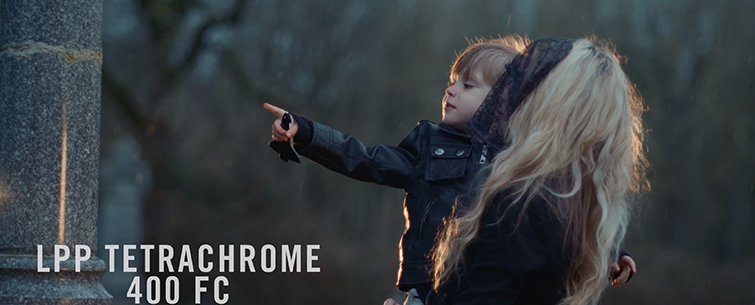
Image via Neumann Films.
PB: Do you have a favorite LUT?
JO: Of our LUTs? Tetrachrome from Impulz. It’s the result of an experiment we did with a lab in Berlin, Germany and it was one of those rare things that just worked. Tetrachrome is really a Kodak Motion Picture stock intended for ECN2 processing (the chemical solution typically used for motion picture film).
We removed the rem-jet layer of the film and push-processed it in C41 to increase the contrast and saturation of the original rendering and ever so slightly shift the colors along the green-magenta axis. It’s by far the most popular emulation from Impulz.
I personally also really like the Koji LUTs. I don’t think anyone has come close to creating more faithful print stock emulations than those guys!
PB: Although they’ve been around some time, a few years back, the concept of LUTs exploded in popularity seemingly within a couple of months. To me, it seemed that the release of the VisionColor LUTs were at the forefront of that burst in popularity. Did you expect this almost “wildfire-like” spread of LUTs?
JO: That’s hard to say . . . I did see that they solved a real problem that I was facing in my own work ,and I know that solving real problems is generally a pretty good indicator for product success. You don’t have to sell people on something that just works.
At the same time, it took some significant marketing and meta-marketing efforts (shoutout to Denver Riddle!) to get the word out on this fairly abstract concept of lookup tables as the new holy grail of color grading. Now, after Osiris, Impulz, and all of their distant cousins, everybody knows LUTs. Not everybody loves them, and few truly understand them, but I do believe that well-made LUTs have played a big part in raising the overall quality of the work we are now able to produce on a budget that doesn’t break the bank.
PB: What do you think makes VisionColor LUTs special?
JO: If anything, it must be the methodology of how we create them. I don’t think that anyone else has actually disassembled the entire film process to “lutify” (no pun intended) each step into a reusable color module.
PB: I’m sure you’re well aware of the sheer popularity of the M31 LUT since the Osiris release. That LUT is used everywhere. Anyone who is more than somewhat familiar with LUTs has most likely heard of it (there are even quite a few fun memes out there about it). What do you attribute the popularity of M31 to?
JO: I think that it comes down to the fact that the M31 was the first Teal and Orange LUT that gave people a shortcut to one of the most popular palettes that has been utilized by artists throughout history. The M31 is a rather heavy-handed exaggeration of a complementary color contrast around the skin tone vector, inspired by some of the most popular films at the time.
The name M31 is actually (slightly) cryptographic and stands for MB (3 – 1 = 2. The second letter in the alphabet is B), the initials of the director whose films inspired the LUT. It’s also an alternative name of a Galaxy that is on an inevitable collision course with our milky way. That was intentional but obviously no one ever got that. If it was meant as a tribute or a warning I won’t tell . . .
PB: One thing I’ve always noticed about your LUTs is that they seem to be friendly with all the different LOG curves out there (s-log, v-log, canon log, etc.) without much alteration. How do you go about making a LUT with this in mind?
JO: We specifically create normalization profiles for all of the different cameras and profiles we support so that emulation LUTs have a common base and produce consistent results. The generic LOG and 709 normalization profiles are created by averaging the 2D gamma and saturation distribution of the most commonly requested cameras.
PB: How do you go about making LUTs knowing that they’ll be used on all different kinds of footage?
JO: Test everything against all these different kinds of footage. Seriously.
We take a data-driven approach to pretty much anything we do, and a lot of color processing is just mathematical statistics applied to three-dimensional datasets that have predictable or known bounds. When you think about footage as confined bags of color data that may never exceed certain thresholds, a lot of the variables that exist in footage when observed from a higher level go away.
PB: What are some of the coolest ways you’ve seen your LUTs in action?
JO: Okay, totally unexpected answer but DJI (the drone company) once accidentally shared some of our LUTs embedded into the open source code of their firmware. I was really flattered! They removed it. We’re cool.
On a more serious note, I think that where VisionColor LUTs have been used to produce the most stunning results, the LUTs themselves really only played a minor role in an overall achievement of beautiful direction, cinematography, and tasteful color grading. Having seen some of the top cinematographers and colorists in the industry use Impulz in the subtle ways it was designed for has definitely been a major highlight.
PB: Any words of advice to people who are new to using LUTs or areas where you feel they’re being used incorrectly?
JO: LUTs, although powerful, are just one of the many tools colorists have at their disposal. Everything should be used in moderation and nothing should be treated like a Magic Bullet (again, no pun intended). Use LUTs as presets when you need to work fast. Try to recreate your favorite LUTs from scratch to sharpen your color grading skills. Don’t use all LUTs at 100% strength 100% of the time. Sometimes don’t use LUTs at all.
Don’t grade to make up for a lack of wardrobe, makeup, or proper cinematography. Don’t be the guy from the M31 meme. (If you are the guy from the M31 meme: I love you, man!). And lastly, don’t listen to my advice on creative color grading. I’m a software developer and business person. Listen to Juan Melara instead.
PB: Is there anything cool in the works for VisionColor in the future or anything you want to share?
JO: Absolutely. I believe that color grading software is still in its infancy and has a long way to go until it reaches a state of completion. The creative application of technologies like LUTs really helped push color sophistication and quality forward over the past couple of years. VisionColor has since been working on defining and implementing the next step in this evolution beyond 3D LUTs. I have been focusing on developing higher-level abstractions for three-dimensional data manipulation. Many of the accepted user interface components used for color grading today are either not abstract enough — take interactive visualizations of mathematical color models for example, which don’t generally correspond with how we think about color as human beings — or careless abstractions like slider controls, which have no correspondence at all with how either machines or humans think about color.
LUTs have helped artists because they’re easy to apply and yet have the capacity to deeply remap color across three dimensions. They’ve also been a pain to work with because they’re essentially rasterized, static chunks of information that cannot be understood, decomposed, or manipulated once compiled. That’s not exactly the expressiveness we demand from our tools as artists, and I know that we can do better. Much better. And we’ll be seeing a new generation of tools emerge over the next couple of years that will put an end to how LUTs are currently being (ab)used creatively, and I have a feeling that VisionColor will again be at the forefront of this movement.
Looking for more filmmaking interviews? Check these out.
- 7 Things to Consider When Shooting on Retro Film Stock
- An Interview with Andrew Shulkind, DP of Netflix Original film The Ritual
- Interview: Showtime Docuseries Cinematographer from The Trade
- The Disaster Artist: Editing A Film About Making a Film
- Exclusive: Designing Wakanda and the Amazing Sets of Black Panther


